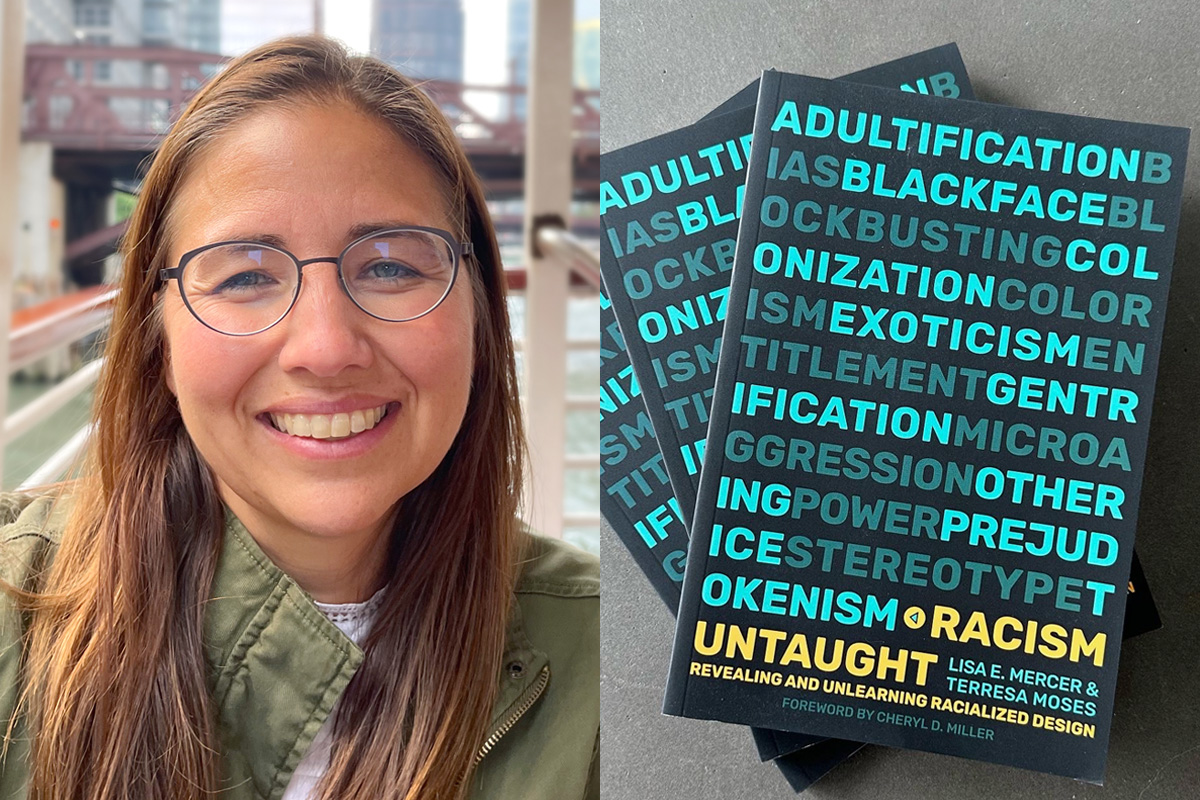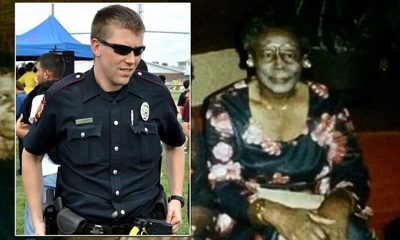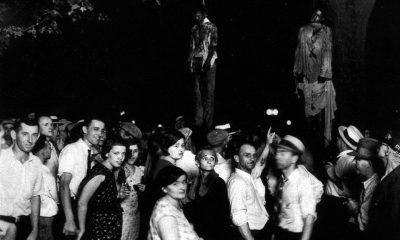States
University Of Illinois Professor’s New Book Explores Racialized Design And Anti-racism

Professor’s New Book Explores Racialized Design And Anti-racism:
To comprehend Lisa Mercer and Terresa Moses’ groundbreaking effort “Racism Untaught,” we’ll concentrate on “Racism” and “Black” to grasp its devastating influence on racial inequity.
“Racism Untaught” is a revolutionary approach to racialized design, not just a book. Lisa Mercer and Terresa Moses’ project is a significant step against racism. The project uses design research to reveal how structure perpetuates racism, highlighting the often-overlooked racial implications of creativity.
The focus of “Racism Untaught” is on anti-racist strategies to combat the racialized design. This initiative helps people unlearn racist structures by giving them a common language and tools.
Mercer and Moses have worked with Target, Spotify, and PayPal in business, academia, and the classroom. The “Racism Untaught” toolset for companies shows its applicability and versatility. This program goes beyond design, making it accessible to a broad audience interested in fighting prejudice.
The Power Of Shared Language In Conversations About Race
The chapter on common language in “Racism Untaught” is exceptional. This subject, which Mercer didn’t consider necessary, helps start race and racism discussions. Giving people the words to describe their race empowers them.
In “Racism Untaught” seminars, participants learn that describing racialized experiences provides a shared vocabulary for critical debates. This universal language enables communication and empowers people to communicate their unique experiences. Mercer’s digital blackface example shows how this common language exposes hidden racism.
Read Also: University Of Illinois Professor’s New Book Explores Racialized Design And Anti-racism
Collaborative Efforts In Unlearning Racialized Design
Unlearning racist design requires teamwork, according to “Racism Untaught.” Racism cannot be eliminated alone, according to Mercer and Moses. Instead, it requires collaborative action to solve complicated and chronic racial injustice.
Participants may critically evaluate racist design in objects, systems, and experiences via the project. “Racism Untaught” invites individuals to raise critical questions and transform their circumstances. Mercer and Moses have shown that teamwork and collective action are crucial to fighting racism in numerous businesses and communities.
Finally, “Racism Untaught” revolutionizes racialized design and anti-racism. Mercer and Moses provide a complete framework to tackle racism and its expressions in design by stressing common language, teamwork, and a broad audience, creating a more inclusive and equitable society.
Addressing Systemic Racism In Design Practices
Systemic racism in design is one of “Racism Untaught”‘s main topics. Systemic racism is systemic prejudice that permeates society. This perpetuates racial prejudices, stereotypes, and exclusion by design.
Mercer and Moses found that racialized design fosters systemic prejudices. For instance, the book shows how a plan may harm historically marginalized populations. Products, services, and locations that exclude disadvantaged racial groups may be created. “Racism Untaught” helps identify and combat these destructive habits.
This project promotes critical thinking about how design supports systemic racism. Participants may spot design flaws by looking at it this way. The collaborative effort allows for anti-oppressive actions that challenge design norms.
The Power Of Case Studies In Real-world Application
Case studies give “Racism Untaught” a practical edge. These case studies are from Mercer and Moses’ industrial, academic, and community activities. They demonstrate how the book’s concepts apply in real life.
A case study at the end of each chapter illustrates how the “Racism Untaught” concept has been used. These real-world examples show that unlearning racist design applies to many industries.
Case studies reveal the many concerns and challenges companies and communities confront. They demonstrate “Racism Untaught”‘s flexibility and applicability in numerous circumstances. Readers learn how anti-racist strategies work by reading these case studies.
Beyond Racism: Tackling Ableism, Sexism, And Capitalism
The initiative “Racism Untaught” addresses additional types of inequality in addition to racist design and racism. Racism, ableism, sexism, and capitalism all impact society and design, it concedes.
Inclusion shows a dedication to equality and justice. It shows how prejudice and oppression are interrelated. The initiative promotes a comprehensive approach to social justice by tackling racism, ableism, sexism, and capitalism.
Critical analysis, shared language, and teamwork may solve these more significant societal issues, suggest the authors. “Racism Untaught” encourages individuals to think outside the box and focus on specific sorts of prejudice to demolish oppressive structures and build more inclusive environments.
The comprehensive “Racism Untaught” initiative analyzes racist design and its social implications. This effort promotes equity and justice via case studies, practical application, and an inclusive approach to confronting various injustices.
Racism In Hiring Processes: A Prominent Concern
The Racialized Design recruitment method reaches across industries. Many firms desire to hire diverse people but struggle to locate them. This issue is regularly highlighted in “Racism Untaught” presentations.
Interviewing, hiring, and retention are critical to recruitment. Mercer says groups frequently declare they can’t find people of color. This shows the need to expand recruitment.
“Racism Untaught” promotes diversity in employment by tackling racism. The initiative emphasizes eliminating systemic biases and prejudices that impact applicant selection and hiring.
Promoting Critical Thinking Across Disciplines
“Racism Untaught” promotes critical thinking across disciplines and sectors. Social workers, realtors, and others have attended Mercer and Moses programs. This approach enables racialized design as a practice-wide issue.
These sessions prompt participants with organization-specific problems. These suggestions help them analyze racial aspects in their fields. The “Racism Untaught” concept helps participants understand how racist design impacts their profession and how to make positive change.
Instead of providing answers, the initiative encourages critical thinking and questioning to change situations. This shared learning experience fosters cooperation, overcomes barriers, and challenges field conventions.
The Unexpected Significance Of Shared Language
Shared language has become an unexpected but essential result of “Racism Untaught.” Mercer shows that adopting terminology to express racialized experiences gives people a common language for discussing race and racism.
Participants may use particular terminologies to describe actual experiences to understand better and communicate their racialized perspectives. This common language empowers people and promotes race and racism discussions.
The research also shows that participants commonly notice harmful circumstances. Digital blackface, where people use emojis, memes, or social media filters to darken their complexion, may have gone undiscovered without this shared vocabulary.

-

 States4 days ago
States4 days agoPearlie Golden 93-Year-Old Black Woman Shot By Texas Cop
-

 States4 days ago
States4 days agoLayers Of Racial Tension The Mario Woods Tragedy And San Francisco Path To Justice
-

 States4 days ago
States4 days agoLynching Of Thomas Shipp Tragedy Of Racism Echoes Through History
-

 States4 days ago
States4 days agoThe Killing Of Terence Crutcher And The Fight For Racial Justice
-

 States4 days ago
States4 days agoTragedy Unveils Racial Tensions Tarika Wilson Story

















You must be logged in to post a comment Login